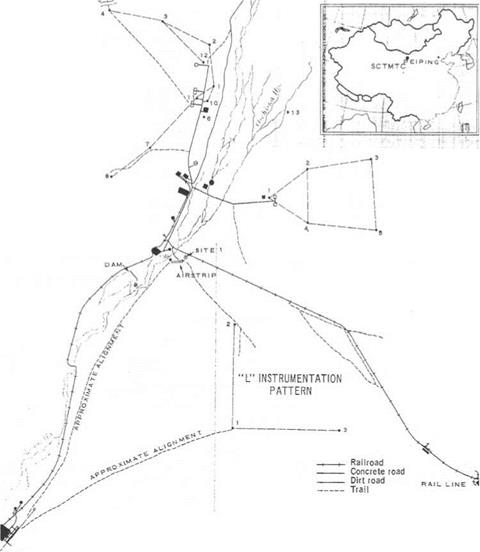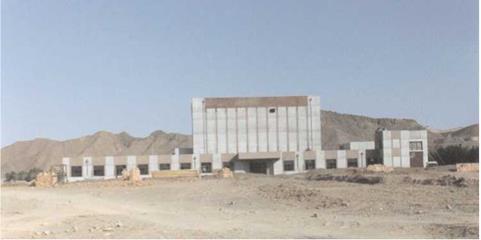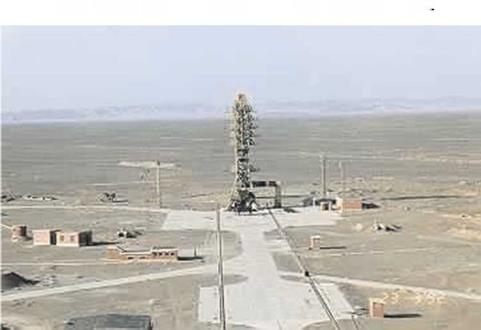BROADENING THE PROGRAM (FSW 1, 2)
The FSW 1 series was introduced in September 1987, barely a month after the conclusion of the FSW 0 series. The “1” series was heavier (2,100 kg), with a greater payload and able to orbit up to 10 days (although eight days was the norm). A digital control system was introduced, new gyroscopes were added to help control attitude, new sensors were added, the satellite could be reprogrammed when in orbit, a control computer was installed, and the pressure inside the cabin could be regulated. Later, the Chinese stated that the FSW 1 series was a cartographical and mapping satellite, making it comparable to the Russian Kometa series.
FSW 1 continued the significant move into microgravity experiments [4]. The first mission, FSW 1-1, was devoted to biological and material processing: seeing how algae would grow in orbit and processing gallium arsenide. One of the biological cargoes was rice and other seeds, which were planted afterwards on the Earth on a 660-ha plot. It was found that space-flown rice grew taller, tilted wider, lasted longer, generated seeds of longer duration, and had greater yield and higher fat content. Whereas a ground version of Japonica rice had a yield of 4,500 kg/ha, the space – flown variety had a yield of 7,500 kg/ha. Indica rice had a 12% higher yield. Green pepper seeds were promising, generating peppers of 300 g and a yield up by 122%. Tomatoes had 20% higher yield and better disease resistance. Wheat and barley were flown in 1988 and 1990 and had greater height, except for those hit by high-energy particles, which did not germinate. Garlic, though, did not like the space environment and growth was weak but, by contrast, rape benefitted [5].
FSW 1-2 carried both a Chinese remote sensing package and a German protein crystal growth experimental package called Cosima. The German experiment, developed by Messerschmitt Bolkow Blohm and the German space agency, DLR, was intended to find new ways of producing the medical drug interferon from large and pure protein-based crystal. Germany paid €440,000 and the package was handed back to DLR the day after landing.
Guinea pigs and plants were carried on FSW 1-3 as part of a microgravity experiment. In doing so, China became the third nation to send animals into orbit and recover them. FSW 1-4 carried a Swedish satellite, Freja, piggybacked into orbit while the main spacecraft carried Chinese and Japanese microgravity experiments (the latter being a 710°C microgravity furnace). The Chinese experiments involved testing how rice, tomatoes, wheat, and asparagus would grow in orbit (apparently,
|
Preparations, top view, giving a good idea of the scale of the cabin. |
much faster). One of the early missions carried mice, but they died after five days due to a pollutant in the atmosphere in the cabin. Subsequent examination found that, prior to that, there were changes in the blood vessels in their brain and lung tissue as a result of weightlessness. Later mice experiments showed a clear shift of blood concentration to the brain [6].
The FSW 1 series carried a suite of three furnaces:
• Temperature Gradient Furnace for gallium arsenide;
• Advanced Gradient Temperature Furnace for remelting; and
• Solution Growth Facility for crystal growth from solutions.
For gallium arsenide, a small 11-kg furnace was used, able to work for 270 min, drawing 150 W of power and able to generate a maximum temperature of 1,260°C. Pioneer of gallium arsenide was Li Lin and she was able to show that
|
Preparations, side view, showing where scientific equipment was installed. |
superconductors made in orbit were superior to Earthly ones. Chen Wanchun was the pioneer of lithium and he grew more than 50 crystals on the FSWs of August 1988, October 1992, and July 1994. The 1996 mission experiments were led by the Institute of Physics of the Academy of Sciences and the Institute of Physics in Lanzhou. They cut a 20-mm silicon gallium arsenide crystal ingot with uniform results, solidified nitrate and phosphorous alloys, and grew 51 boules of calcium hthium crystals. According to experimenters Chen and Wei, the processes of crystal growth in orbit were very complex, involving a mixture of factors that are still not well understood. Iron samples were also smelted [7].
|
Launch: this is FSW 1-4, carrying Sweden’s Freja. Courtesy: Sven Grahn. |
One satellite failed spectacularly – FSW 1-5, which did not return to the Earth when commanded to do so in October 1993. The satellite failed to rotate downward for the return to the Earth, but instead the engine fired in the direction of travel, propelling the FSW into a much higher orbit, as far out as 3,023 km. More critically, its perigee of 181 km was deteriorating fast, with the risk that the uncontrolled satellite might survive the fireball re-entry and crash on inhabited zones of our
planet. These developments were especially unfortunate, for FSW 1-5 was flying a number of unusual cargoes. In addition to scientific equipment, the cabin had 1,000 stamps, 3,000 first-day covers, credit cards, photos, 194 calling cards, and 235 ornaments and gold-studded medallions of Mao Zedong – apparently destined for sale to Japanese collectors, where such items reached premium prices. The media, as ever, warmed to the apocalyptic prospect of a rogue satellite plunging destructively to the Earth, only to be disappointed when, after several days of bouncing off the upper layers of the atmosphere, FSW 1-5 came down in the southern Atlantic on 12th March 1996.
The FSW 2 series was introduced in August 1992, even before the FSW 1 series had come to an end. Its principal innovation was the ability to maneuver in orbit, but there were other improvements. Compared to the FSW 1 series, the “2” model had a greater weight (3,100 kg), 53% heavier payload (350 kg), 20% greater cabin volume, and it could stay in orbit for up to 18 days. The length of the spacecraft was increased by a third to 4.6 m, with a much larger service module, part of which was pressurized. FSW 2 carried a more sophisticated attitude control system and an advanced computer. The much-increased size of the FSW 2 meant that it required a larger launch vehicle, the Long March 2D, an improved version of the 2C (although the C continued in operation for other missions).
FSW 2-1 (August 1992) was a dual-purpose mission, with both remote sensing
and microgravity experiments (in this case, cadmium, mercury, tellurium, and protein crystal growth). It used its maneuvering system to change orbit three times during the mission. The first attempt to re-enter, on the 12th day of the mission, failed but, after going through the procedures again carefully, ground controllers were successful on the 16th day. FSW 2-1 marked the first tests of protein crystal growth in orbit devised by professors Gong and Bi of the Institute of Biophysics of the Academy of Sciences. Sixty percent of proteins grew better than on the ground. There were 10 protein growth experiments in 48 cells, one including snake venom: crystals were grown in a multi-purpose finishing stove, a furnace able to provide heating of 813°C. The results were encouraging, with space crystals growing larger, more uniform, and clearer than the control group on the Earth. The Institute of Superconductors flew an experiment to make a perfect 10-mm single crystal, one of the four attempts being successful. This experiment was repeated on the later FSW 14 mission, this time with lithium crystals, 30 being grown. Both the cell culture experiment and microbial cultivation experiment were declared a success [8].
FSW 2-2 flew in July 1994 and also maneuvered in orbit; it carried an even more exotic cargo: rice, water melon, sesame seeds, and more animals. Fourteen protein crystals were tested, with much better results than on FSW 2-1, the experiment being repeated on shuttle mission STS-69, where three proteins were crystallized using a liquid diffusion method but, overall, that experiment was less successful. FSW 2-2 carried a tuber-like vapor diffusion apparatus. With 48 samples, nine proteins crystallized, the highest qualities coming from egg white, snake venom, and hemoglobin from the bareheaded goose. Twenty-two lithium crystals were also grown, the quality being more consistent than those grown on the Earth. DNA chromosomes were modified in large-grained rice [9].
FSW 2-3 carried Japanese microgravity experiments for the Japanese Marubeni Corporation with Waseda University, involving the development of indium and gallium mono-crystals. The Chinese materials processing experiments concerned the production of mono-crystalline silicon, photoconductive fiber with impurities of 10-7, and medicines to prevent hemophilia. China also carried its own microgravity materials processing experiments, as well as a biology package of insect eggs, algae, plant seeds, and small animals for the Shanghai Institute for Technical Physics. For the first time, the information collected by the satellite in orbit was stored on compact disk. FSW left, as normal, the equipment module behind in an orbit of 167— 293 km. In an innovation, its engines were re-lit on 11th November to lift it into a higher orbit of 212-299 km – a maneuver not explained at the time.















 41°0′ /
41°0′ /

